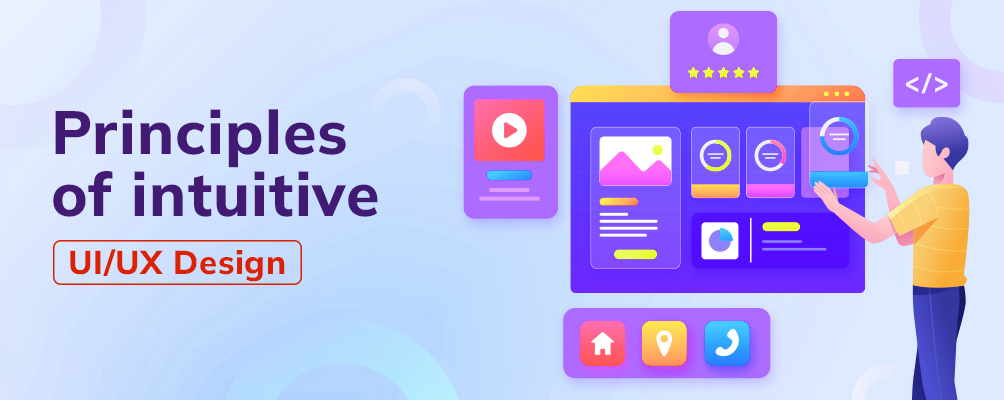
Radical UI/UX design changes in 2021 made one thing clear – digital products have to be developed with a user-centric approach. The term ‘user-centric’ was coined back in 1970, but we have come a long way to understand user needs and improve people’s experience across digital products. The apps we use today are smarter, clean, and more organised because designers are trying every way to master the art of digital layouts.
Today, a user knows that a good digital product gives a seamless experience; something that operates in a seemingly natural way and doesn’t take much time in understanding how to use it. So, how are UI/UX designers taking care of users’ needs today?
Let’s explore a few principles of building an intuitive UI/UX design for the modern user:
Create minimalist designs
Stuffing an app with too much content is distracting, and a distracted user can never connect to your product. Users might as well abandon the app right away. Ideally, the apps should look organised and give clear instructions. It is best to practice minimalism with design and keep elements clear with proper spacing. This will result in a crisp design and a good structure to your app. The Glassmorphism design trend is an excellent example of minimalism that has enough space, adds depth to the design layout, and of course, pleasing to the eyes.
Choose adequate size for interactive elements
According to Fitt’s law, the smaller the target size and the longer the distance for a pointer to reach the target, the more time it takes to take action. On a digital platform, when the distance between the cursor (pointer) and a button (element) is more, a user takes more time to click it. Within this time difference, they may not even act as intended. Following the given law, substantial elements should have adequate size. The size should be such that it reduces the time for users to take action. Elements, with a bigger size and a predictive text, make a good UI.
Give informative feedback
A good UI must have feedback for user-actions. For instance, when a user clicks a button and the colour of the button changes to acknowledge his action, the user will not have to double-click to perform the intended task. Another example, when downloading or uploading a file, showing the system status helps a user know the performance of action. Such simple ideas can keep users informed and ease their digital experience.
Allow reversible actions
Even if people use digital products every day, mistakes are inevitable. Therefore, users must have the control to undo or redo their actions. If users have to be very careful on a platform, they will stop exploring it. There could be several engaging features within your application, but users may not explore them due to the fear of making a mistake. By allowing reversible actions, you can encourage users to explore unfamiliar/new features. Gmail’s undo pop-up message for accidentally deleted e-mails is an example you can consider here.
Recognize user patterns
Users expect UIs to recognize their patterns and simplify the online experience. A good example to understand this is – autocomplete dropdowns when you enter a keyword into online search bars. The suggestions are helpful if a user cannot guess a complete term, a public figure name, a technology, a product, etc. Another example is the recently viewed articles (content, product, etc.) on apps or suggestions like “people who bought this also bought this”; users are fond of auto-complete suggestions.
A UI/UX design must help the users to explore a product and not stop them of using it. The principles stated above are only a few examples to show how you can create a user-oriented design. With experience, you can develop your own observations to create engaging designs.
No Comments